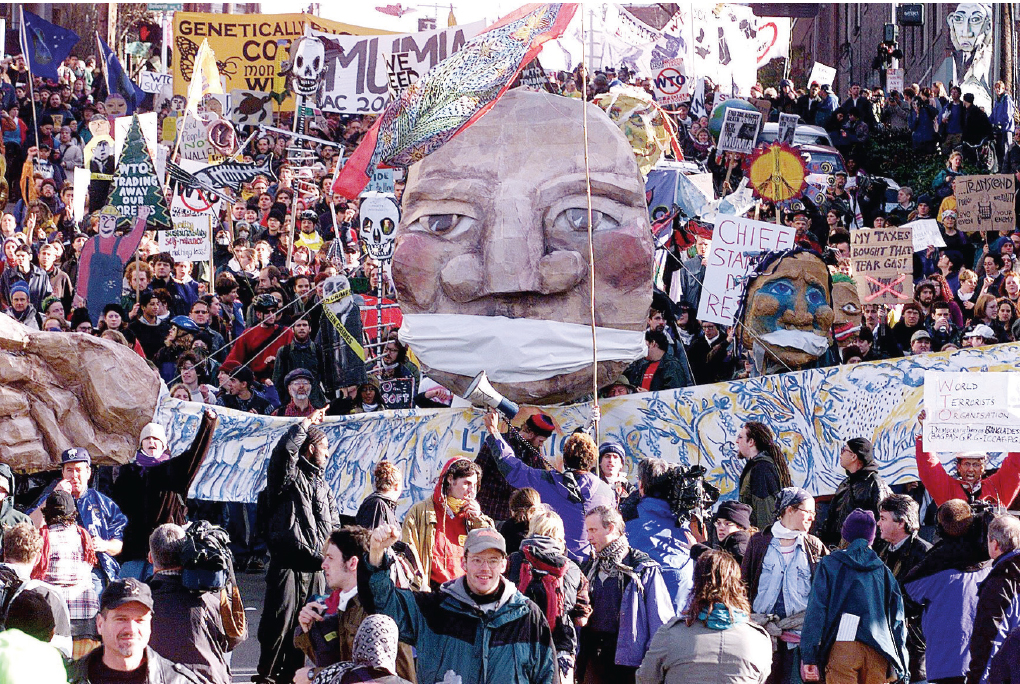America’s History: Printed Page 970
America: A Concise History: Printed Page 879
America’s History: Value Edition: Printed Page 859
Globalization and Increasing Social Inequality
 Hector Mata/AFP/Getty Images.
Hector Mata/AFP/Getty Images.
The post–World War II expansion of the American economy had ended by the early 1970s. Wages stagnated. Inflation skyrocketed. In the 1980s and 1990s, however, productivity increased, military spending boosted production, and new industries — such as computer technology — emerged. These developments led to renewed economic growth. More and more, though, the economy produced services rather than goods, which Americans increasingly bought from overseas.
The fall of communism and the end of the Cold War had made possible this global expansion of capitalism, as multinational corporations moved production to low-wage countries and international trade increased. Governments across the world facilitated this process by deregulating financial markets and by creating new trading zones such as the European Union (EU) and the North American Free Trade Agreement (NAFTA).
Conservative tax policies, deindustrialization, the decline of unions, and globalization all contributed to a widening inequality between the wealthiest Americans and the middle class and poor. Between 2007 and 2010, the negative side of global market deregulation became apparent, as Europe and much of North America suffered the worst economic downturn since the Great Depression. Globalization thus brought new economic opportunities and interconnections as well as the potential for renewed economic insecurity.